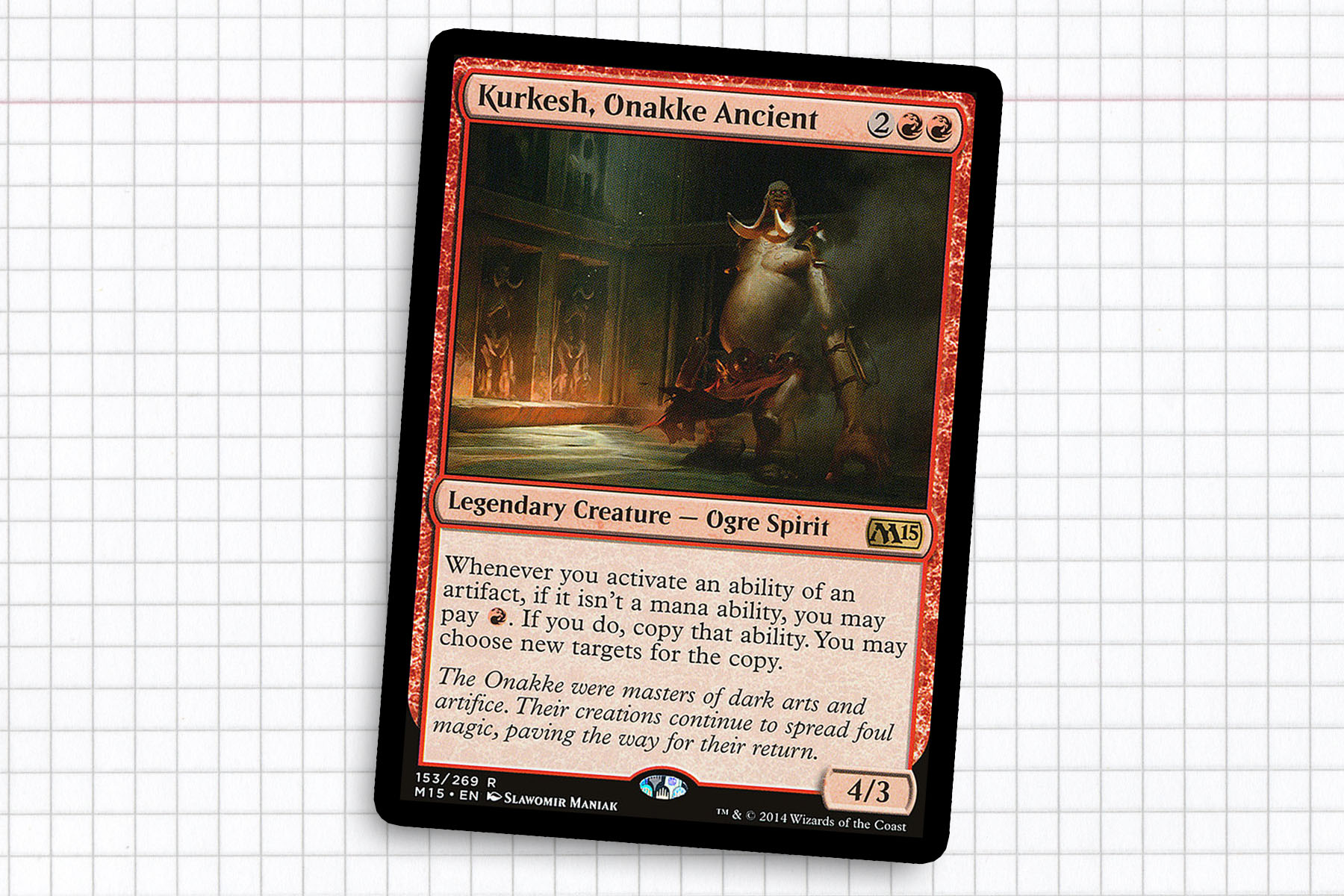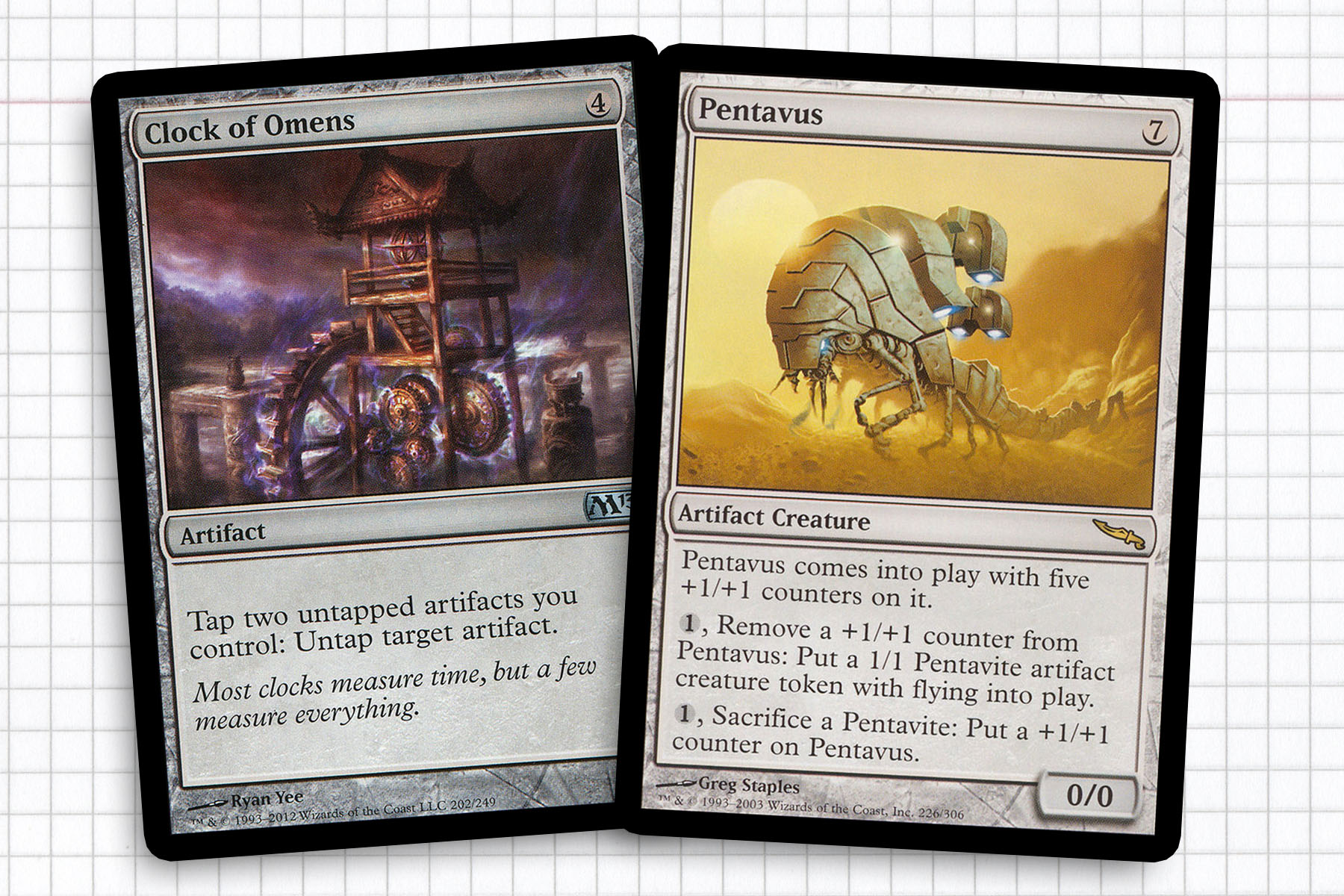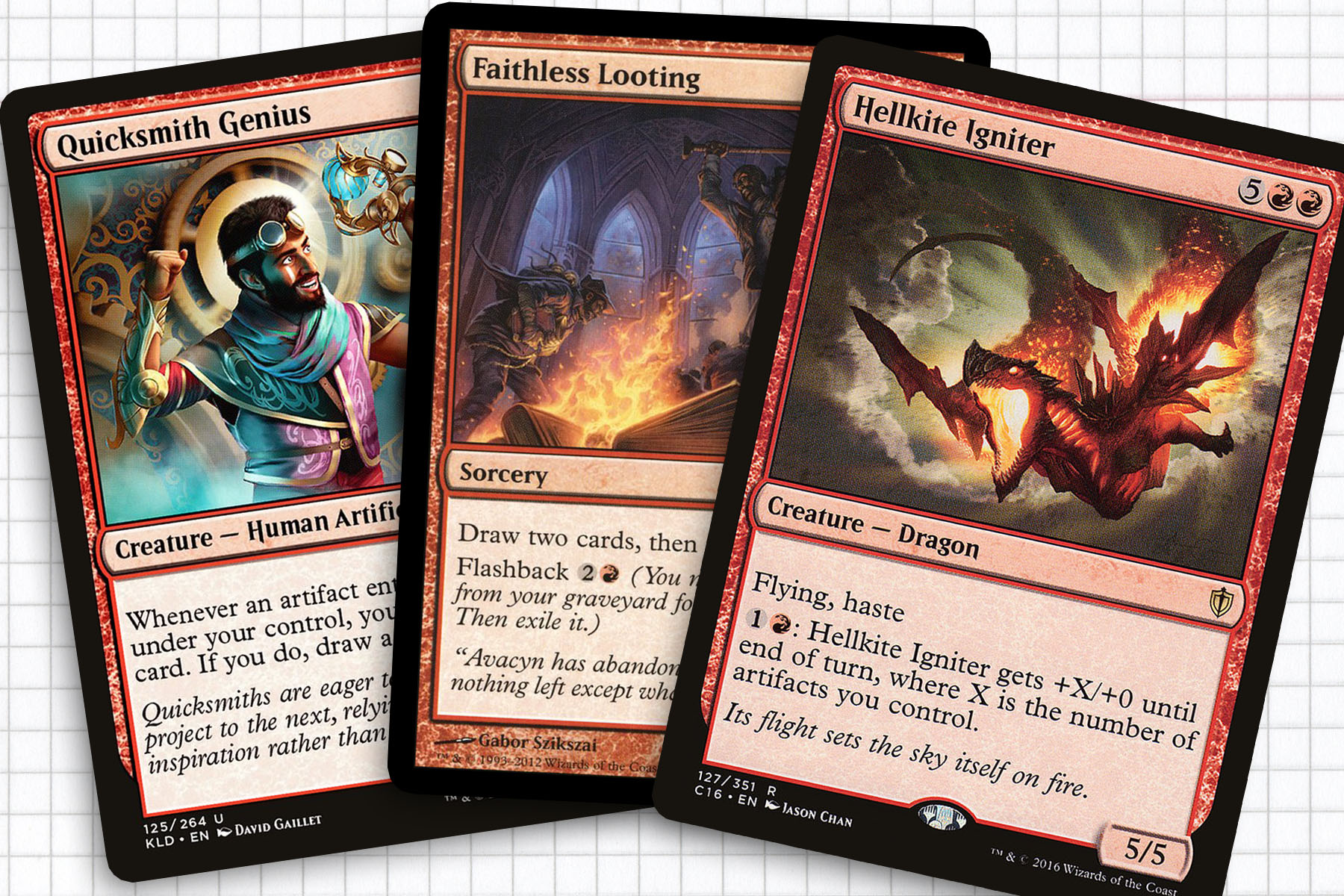Dollar General—[dol-er] [jen-er-uhl]
A variant of the Commander format, itself a casual multiplayer variant format for Magic: the Gathering with specific rules centered around a legendary creature called a General. The additional layer being that every card comprising a 100-card deck must cost less than a US dollar.
Dollar General is an interesting variant format of Commander. The fluctuation of prices of cards from a new reprint or just something rotating out of Standard can mean that strategies that were not available two or three months ago are entirely viable now. A format relying on draft fodder and the kinds of rares that normally just take up space in a trade binder also means that the decks coming to the table can be far more original than other decks stocking the objectively best options.
This week I wanted to use the format as a vehicle to investigate a general that has seen very little spotlight within the greater Commander format. With this goal alone it wasn’t hard to look at a list of the least played commanders in the format and try to decide on one. While I would never call it a great plan of action, sometimes the best strategy for finding the next Commander deck you want to build is looking where other people haven’t. This week we’re going to be telegraphing our plans quite a lot, but I believe we can also end up being rewarded with an explosive deck that can change the landscape of a game in less predictable ways. This deck is probably not for the aggressive at heart, but hopefully it will excite those looking for a multitude of knobs to fiddle with.

Kurkesh, Onakke Ancient
With fewer than 80 decks logged into EDHrec, Kurkesh, Onakke Ancient felt like an optimal legendary creature to feature to highlight their full potential. To many, the existence of this card seems to be as elusive as his home plane of Shandalar, the setting of the 1997 MicroProse game. Implied to be the creator of The Chain Veil, Kurkesh is believed to have been a potentially powerful artificer, a feature I believe is present with his card. I am guilty of not giving much thought to this card over the years, even as I was screaming for Wizards to give us something exciting to do with mono colored generals to liven up the format. My only explanation at the time was that Khans of Tarkir block was rapidly approaching and the idea of doing anything other than focusing on wedge generals seemed off.
The focus of this deck will be obvious: we’re going to pack our deck with as many useful artifacts as we can—hopefully covering well for redundancy—with the express purpose of doubling up on their effects and outpacing the rest of the table in the process. The dollar restriction will mean that we will be digging into a different subsection of cards than a traditional Kurkesh might, as some of the objective best artifacts are outside of our budget. I’m not sweating this though, as it means that my deck will pack more surprises and hopefully be that much more fun to pilot.

All the Best Toys
Most Commander decks can tell you exactly what their going to do when the general is revealed. And with this deck, it would be foolish to fight against what our general wants to be doing. While I want to bring some nuance, it would not be a stretch to say that a desired game state for this deck is going to involve finding synergies with artifacts, such as the interactions Pentavus or Myr Battlesphere have with Cogwork Assembler and Lodestone Myr.
Artifacts are already one of the unsung heroes of many Commander decks, becoming invaluable simply by the fact that they often bridge the gap for colors that are lacking certain effects. The most important factor to us is finding great effects that gain value when multiplied, a few that I am trying out in this deck are Trading Post, God-Pharaoh’s Gift, and Witch’s Oven. Even if all we are doing is sacrificing artifacts to draw two cards, I have a lot of faith in Trading Post here and see it as an auto-include with this strategy, becoming disportionately strong very quickly.
Similarly, the more chances we get to combine Kurkesh with Clock of Omens or Voltaic Key, the better experience we’re going to get out of the deck. This will all be enabled by Foundry Inspector and Mishra’s Self-Replicator giving great support to our artifact theme, while setting the table for my ultimate endgame plan.

Looting for Answers
Red has certainly gone through a bit of a metamorphosis in the last decade, and I’ve tried to take advantage of these advancements as much as possible in this deck. I don’t know that I would put that all on Commander, but the proliferation of card advantage spells like Faithless Looting, Outpost Siege, and even Wild Guess would have felt absurd only a few years earlier in Magic’s history. In fact, card advantage has become solid enough for Red that I didn’t feel I needed something like Temple Bell or even Mind Stone.
These bread and butter spells are not so powerful that they are priced out for us and we’ll be able to combine them with mana generating spells like Desperate Ritual and Mana Geyser to get situational bursts in mana to make some exciting plays. Layered into this list is a small subset of cards meant to take advantage of Red’s relatively common theme of copying creatures as well with options like Feldon of the Third Path, Flamerush Rider, and Twinflame. These spells, combined with the mana production and card draw should allow for us to dig for a classic favorite, Warp World and really change the momentum of the game.
Keeping this plan in mind, my build was mindful to keep the amount of instants and sorceries reasonably low at twenty-one slots, meaning that in combination with a successful replication of Pentavus or Myr Battlesphere, we should be able to flip the entire table and come out on top at resolution. If we can have Reckless Fireweaver and/or Quicksmith Genius in play when the dust settles, I believe we will be pretty well off.
This of course will not be our only plan—a well timed Saheeli’s Directive just before we attack with Hellkite Igniter could also mean certain doom for at least one opponent. All of the options should make for a reasonably solid threat and I don’t feel that I am being too realistic with these hypothetical lines of play. While not the perfect fix, having Tamiyo’s Journal in the deck list means that we have a source for repeatable tutoring to combine with the already plentiful amount of card draw present.
Brainstorming with this deck makes me really excited for the next night of Dollar General, which just so happens to be a secret santa event taking place just before the holidays. One of the most appealing parts of these projects is often just proving how much fun you can have on a reasonable budget. This deck currently comes in under $35, which is about the price I would play for a preconstructed Commander deck at my local store. Even better, these cards can often be comparable with those decks in terms of power level, meaning that you can often hand one to a player just getting into the format while still giving them a unique experience.
The year is almost coming to a close and I’m realizing that I missed a few opportunities to talk about Throne of Eldraine generals that really tickled my fancy. As of right now, those are my forecast for my remaining articles for the year. I hope to see you next time and many times after.
Ryan Sainio is a Graphic Designer who writes about EDH and the EDH community. He has been playing Magic: The Gathering since 7th Edition in 2002 and values flavorful and fun gameplay over competitively optimized decks.

